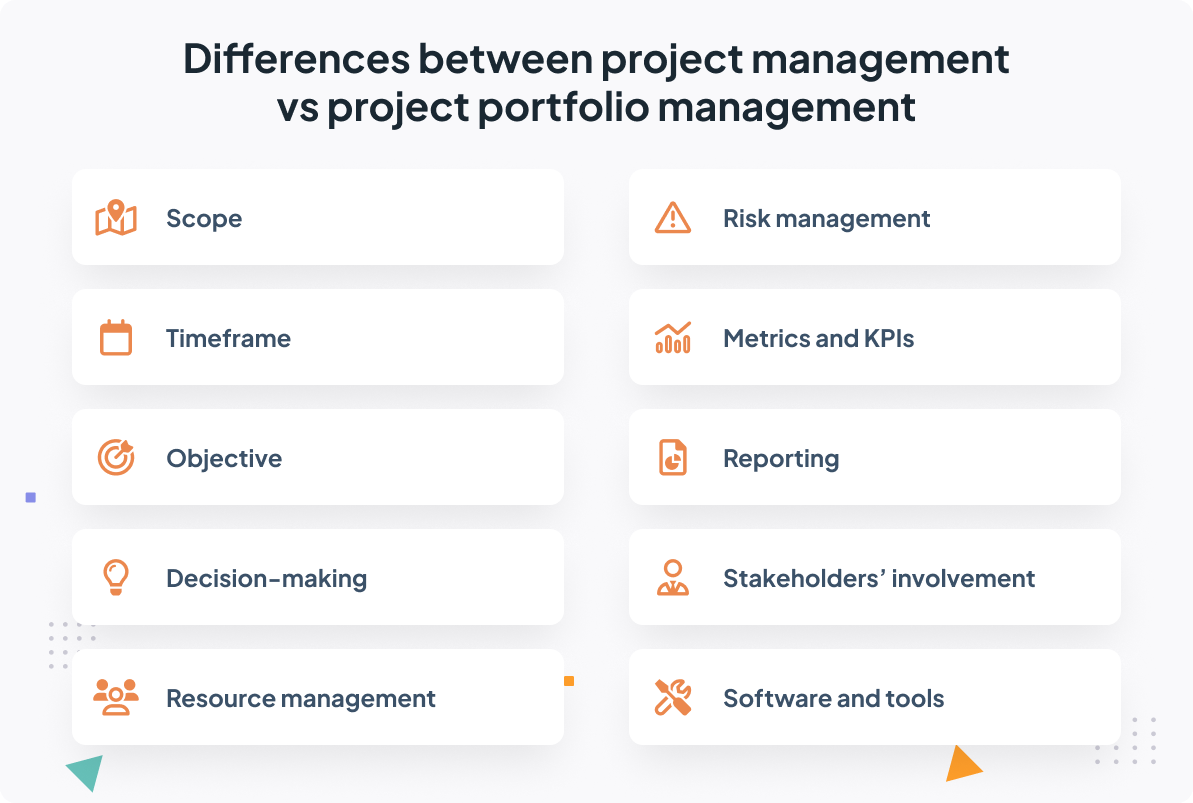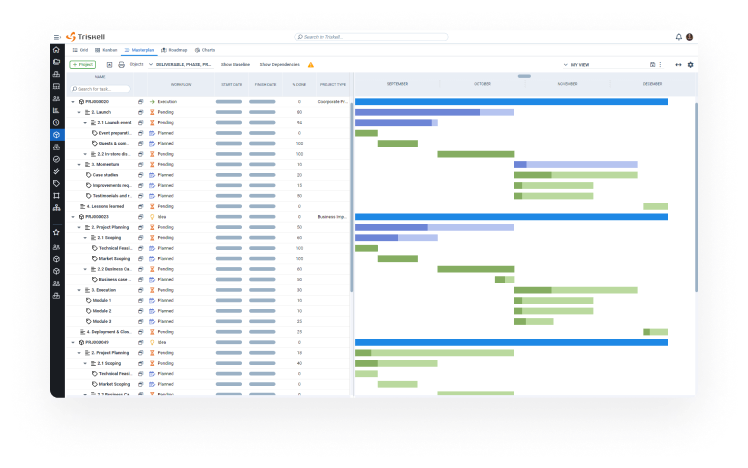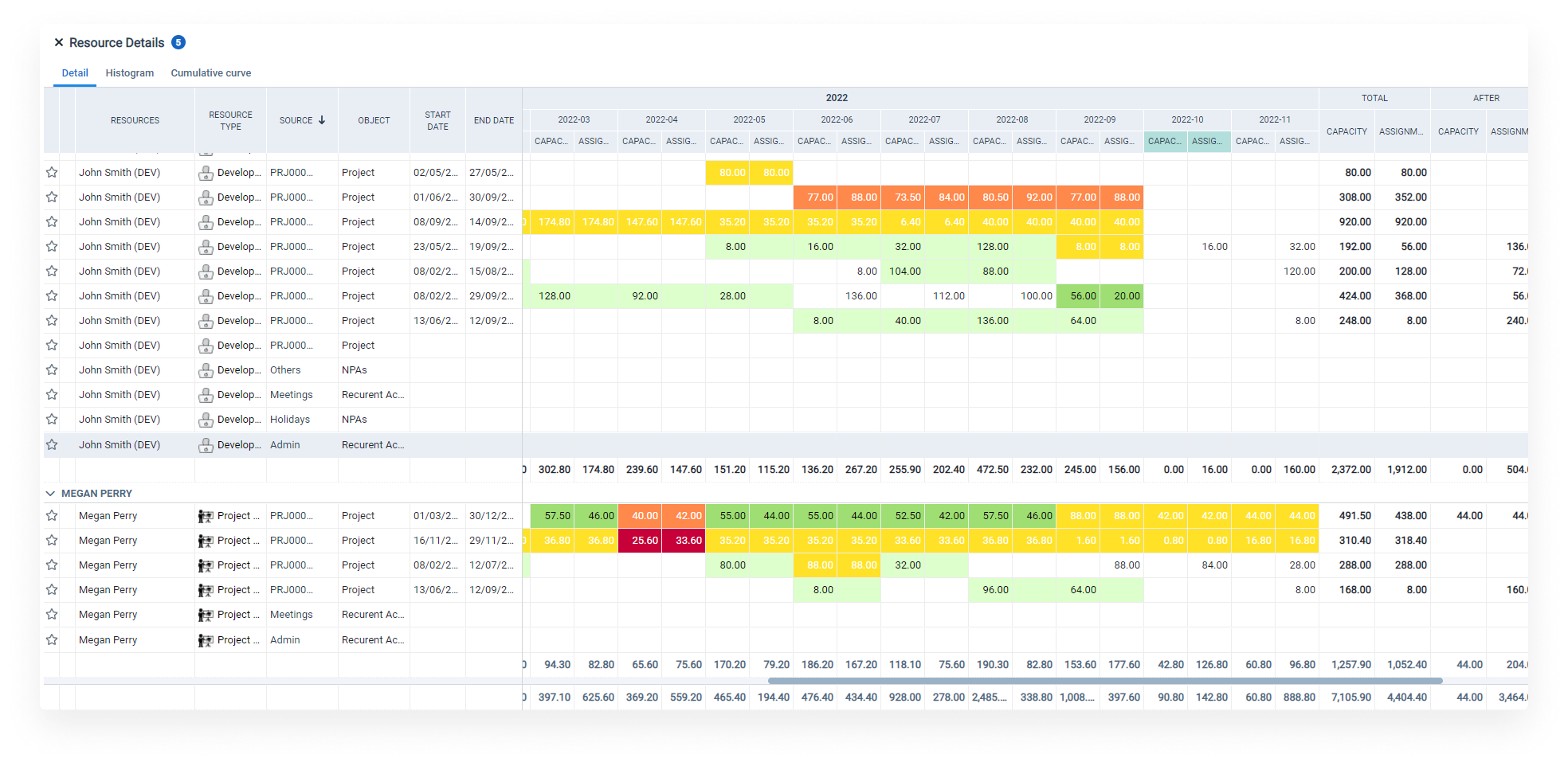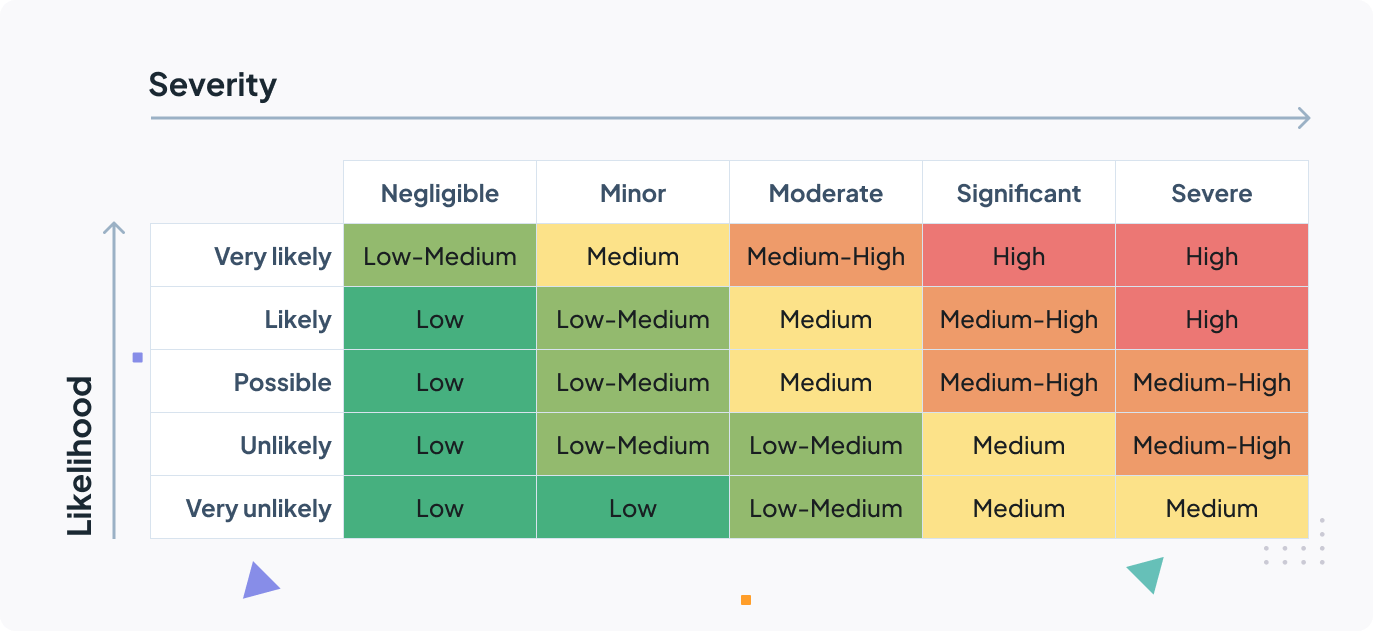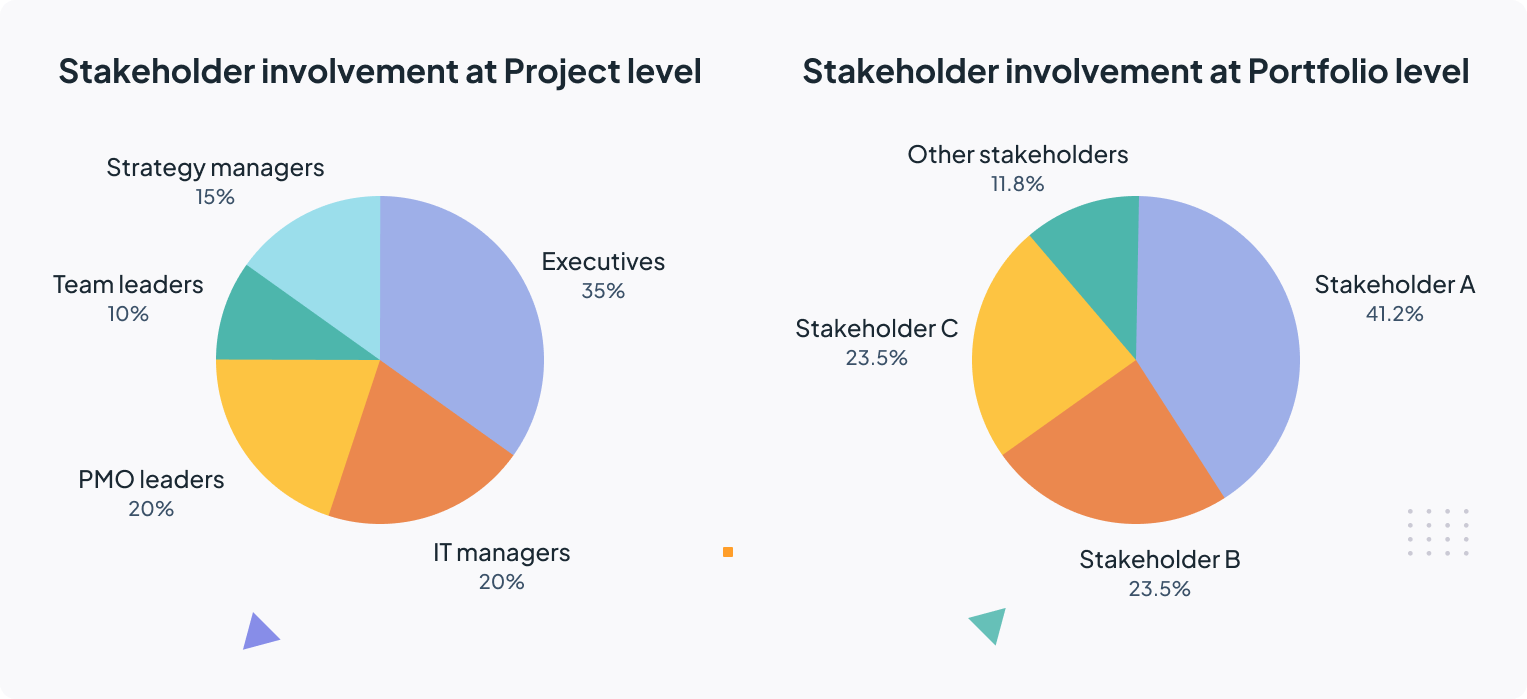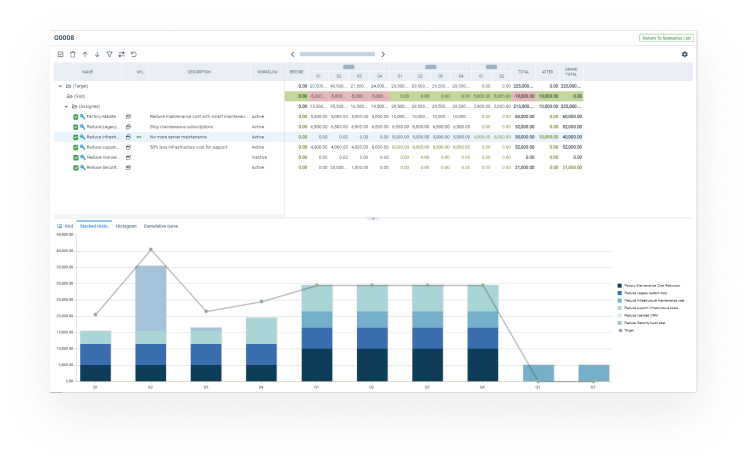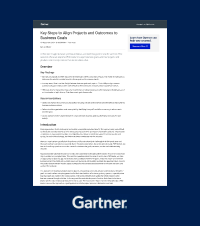Project Management vs Project Portfolio Management: understanding the differences
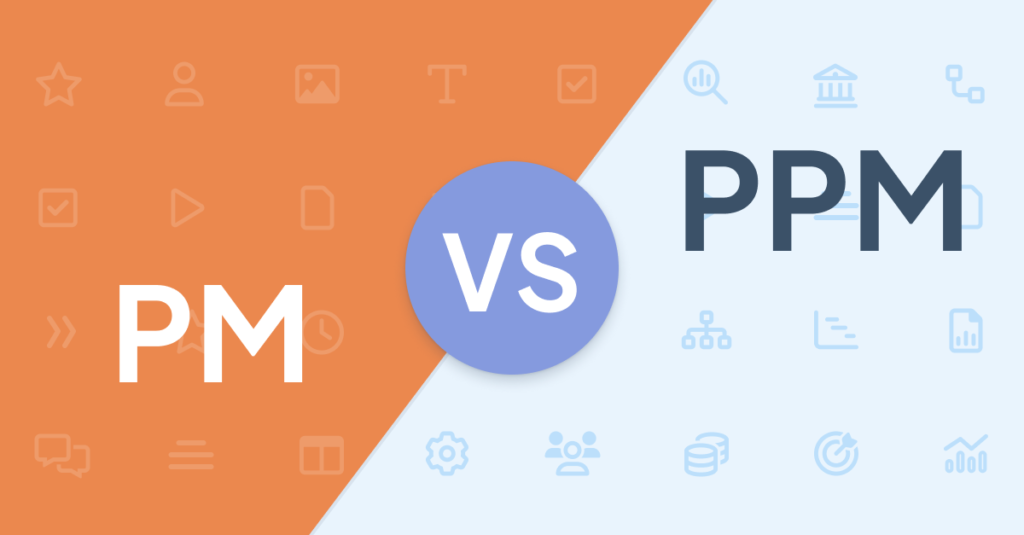
In the field of project execution and business strategy, knowing the differences between Project Management and Project Portfolio Management can make the difference between success and failure. This is not a mere semantic exercise, but a key factor for success in project execution and strategic decision making.
What is your organization’s approach to Project Management? Do you just oversee individual projects, or do you have to strategically manage a considerable volume of initiatives? If your organization is large enough to have to manage multiple project portfolios, the way you manage them will not be the same as if you only have to work on a handful of projects per year.
Therefore, in this article we show you the 10 main differences between Project Management and Portfolio Management, so that you can see how each of these elements has a decisive influence on project execution and alignment with the overall business strategy.
Project Management vs Project Portfolio Management: what’s the difference?
But before going in depth into the differences between both approaches, let’s first briefly define what Project Management and Project Portfolio Management are. And it is in the definition of both concepts that you will already begin to notice the first differences between them. Let’s go there!

PROJECT PORTFOLIO MANAGEMENT
Go beyond project management with Triskell Software
Discover Triskell’s Project Portfolio Management solution.
What is Project Portfolio Management?
As stated by the Project Management Institute (PMI), Project Portfolio Management involves “the centralized management of one or more project portfolios to achieve strategic objectives”.
Therefore, unlike Project Management, it is not just about overseeing projects for their successful completion. It is about selecting and prioritizing the right projects to maximize value and achieve strategic objectives. This involves assessing the health and performance of each project in the context of the organization’s overall mission and vision.
Understanding Project Management
Project Management, on the other hand, focuses more on the execution and details of each project. It involves planning, executing and managing projects so that they meet the established objectives within constraints such as time, resources or project scope.
The following quote from Peter Drucker, a renowned Austrian-American management consultant, perfectly explains the main difference, at first glance, between Project Management and Project Portfolio Management:
Management is doing things right; leadership is doing the right things
Project Management is about getting things done right, i.e. making sure that tasks are meticulously planned and executed to meet project objectives. Project Portfolio Management, on the other hand, is about making the right choice of those initiatives that will contribute the most value to the business objectives.
10 differences between Project Management and Project Portfolio Management
Now that you are clear on what Project Management and Project Portfolio Management are, let’s look at the 10 key differences between the two approaches.
1. Scope
Project management is intrinsically focused on projects, successfully guiding them from inception to completion and overcoming obstacles and complexities along the way. Project scope is narrowly defined to meet the specific objectives, timelines and resources assigned to each project.
However, the scope of Project Portfolio Management is much broader, encompassing the entirety of an organization’s project portfolios. The primary objective of PPM is to select and manage the right projects to ensure that they collectively align with the organization’s strategic objectives and long-term vision.
2. Timeframe
Project management is time-bound. Each project must have a fixed duration, with a clear start and end date dictated by the scope and objectives of the project. Efficient time management plays a key role here, as it will help ensure that project deadlines and milestones are met, thus ensuring that projects progress according to schedule.
PPM, on the other hand, has a much broader time frame. It involves long-term planning, assessing how projects fit into the organization’s overall strategy over longer periods. The priority is not only to complete projects on time, but also to ensure that project portfolios as a whole evolve dynamically to meet the changing needs of the business.
3. Objective
The main objective of project management is to bring a specific project to a successful conclusion within predetermined limits and criteria. In short, project management aims to:
- Achieve project objectives.
- Meet quality standards.
- Adhere to budget.
- Complete tasks on time.
However, the objective of Project Portfolio Management is more strategic and global, as it aims to maximize the value and benefits derived from all of an organization’s project portfolios. To achieve this, projects and resources must be aligned with the long-term objectives of the organization, ensuring that their collective performance contributes to the overall success and growth of the business.
SUBSCRIBE TO OUR NEWSLETTER
Get stories like this in your inbox
4. Decision-making
Project management decision making focuses on the here and now. It revolves around the immediate needs of each project, and project managers and PMOs make decisions to ensure that tasks are completed, problems are resolved and projects stay on track. These decisions are usually reactive to respond to evolving needs and challenges at the project level.
In PPM, on the other hand, decision making is proactive, strategic and forward-looking, and involves:
- Selecting the right set of projects.
- Prioritizing initiatives based on their alignment with strategic objectives.
- Optimizing resource allocation for maximum impact.
5. Resource Management
Resource Management in Project Management focuses on the specific needs of each project. Project managers allocate resources to tasks, ensuring that the right skills are available at the right time to meet project deadlines and deliverables.
Project Portfolio Management takes a more holistic view of Resource Management. It involves optimizing resource allocation across portfolios, balancing capacity with incoming demand, avoiding bottlenecks, and ensuring that resources are allocated to projects that best fit strategic objectives.
6. Risk management
In project management, risk management focuses on identifying, assessing and mitigating project-specific risks. Project managers, in this regard, are responsible for:
- Analyze potential threats to project success.
- Develop mitigation plans.
- Monitor risks throughout the project life cycle so that any deviations are promptly addressed.
In PPM, on the other hand, the scope of risk management is much broader. It involves assessing the risks of the entire portfolio, and determining from a strategic point of view how the risks of a project may affect the overall objectives of the organization. At the end of the day, it is about establishing risk-resistant project portfolios by diversifying risk factors and making informed decisions about the organization’s tolerance to those risks.
7. Metrics and KPIs
Project-level metrics and KPIs typically focus on project parameters such as task completion, schedule adherence and budget management. These are metrics that are typically used to assess project performance and make real-time adjustments to ensure project success.
On the other hand, when managing one or several portfolios of projects, the KPIs to be analyzed should be aimed at measuring the overall performance of all the portfolios. These are metrics that should provide you with an overall view of how the project portfolios contribute to the success of the organization. For example:
- Customer satisfaction (CSAT).
- ROI.
- Alignment with strategic objectives.
8. Reporting
In project management, the main purpose of reports is to inform about the status of projects, the milestones achieved, and to report problems and incidents of interest. They should be detailed, and visually appealing in order to facilitate decision making within the project team.
Ready to optimize your Project Portfolios?
Request a demo and see how Triskell allows you to manage your entire portfolio, prioritize effectively and ensure strategic alignment from a single PPM tool.
Instead, portfolio-level reports should be more strategic and focus on providing stakeholders with an overview of the performance of project portfolios as a whole. These reports can include information on resource allocation, risk exposure, and the overall impact of each portfolio on the organization’s objectives.
9. Stakeholder involvement
At the project portfolio level, the spectrum of stakeholders that, in one way or another, participate in the decision-making process is quite broad. Executives, IT managers, department heads, strategy managers, PMO managers and other organizational leaders must be involved in decision making to ensure that project portfolios are aligned with the overall objectives and vision of the organization.
On the other hand, at the project level, stakeholder engagement is limited only to aspects related to a specific project. Project managers must involve stakeholders to gather requirements, communicate project progress and address their concerns. The goal, after all, is to ensure that the project meets the expectations of those who are directly affected by its outcomes.
10. Software and tools
Finally, the tools to be used for efficient project and portfolio management vary from case to case.
Project Management tools are designed to facilitate the planning, execution and monitoring of individual projects. They include features such as Task Management, collaboration tools and Gantt charts to help Project Managers keep track of the specific details of each project. Jira is the best example of a Project Management tool on the market.
A PPM software, on the other hand, is much more comprehensive, since it includes a series of functionalities to manage, from a single interface, all the management and governance processes of an organization. Thus, it is normal to find in a PPM tool features for Resource Management, Strategic Planning, Demand Management or Financial Management of project portfolios.
Conclusion
In the field of project management, the synergy of Project Management (PM) and Project Portfolio Management (PPM) is crucial. PM excels in the success of individual projects, while PPM strategically aligns multiple portfolios with long-term goals.
For medium and large enterprises, Triskell Software stands out as an ally, offering a tailored suite to optimize resources, assess and manage risks, and achieve efficient alignment with overall business objectives. With this synergy, organizations can not only navigate complexity, but thrive with a strategic vision.
SUBSCRIBE TO OUR NEWSLETTER
Get stories like this in your inbox
Request a demo of Triskell Software
Triskell meets all the requirements for your organization’s PMO to take a step forward in aligning your project portfolio with strategic planning.
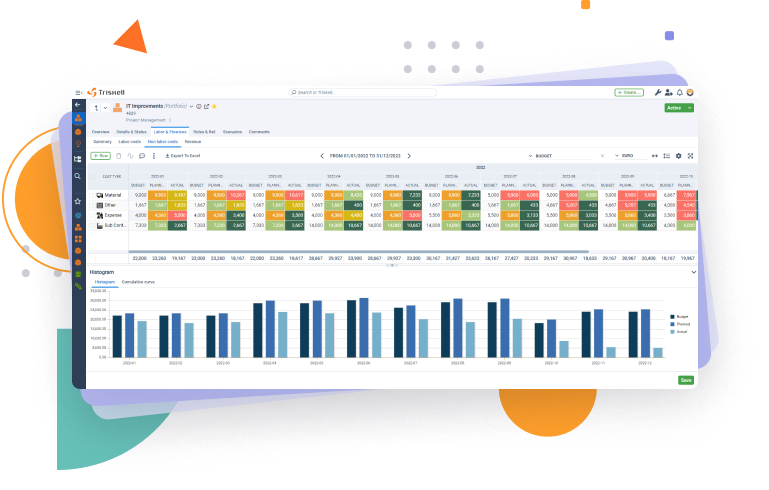
FAQs about Project Management vs Portfolio Management
I manage individual projects successfully. Why do I need project portfolio management?
Even if you’re adept at handling individual projects, project portfolio management (PPM) offers a broader perspective that can significantly benefit your organization. Here’s how:
- Strategic alignment: PPM ensures your projects directly contribute to the organization’s strategic goals. It helps you choose the right projects, not just the ones that are easiest to manage.
- Prioritization: with multiple projects on the go, PPM helps prioritize them based on factors like strategic impact, resource availability, and risk. This ensures you’re focusing on the most valuable projects first.
- Resource optimization: PPM allows you to see the bigger picture of resource allocation across all projects. This prevents resource overload on specific projects and ensures critical skills are available where needed most.
- Risk Management: PPM helps identify and manage risks across the entire portfolio, not just individual projects. This proactive approach can mitigate potential issues before they derail project success.
In essence, PPM complements your individual project management skills by providing a strategic framework to maximize the overall impact of your work.
How can resource management be different in project vs portfolio management?
Project management and portfolio management take different approaches to resource allocation:
- Project Management: Focuses on fulfilling the needs of the individual project at hand. Resources are assigned based on the specific tasks and skills required for that project’s success.
- Project Portfolio Management: Takes a high-level view, considering resource availability across all projects within the portfolio. It prioritizes projects based on strategic importance and ensures resources are distributed to maximize overall return on investment.
Think of project management as focusing on the trees, while PPM focuses on the entire forest. It ensures you have the right resources in the right places to achieve your organization’s strategic objectives.
Can I use project management software for project portfolio management?
Basic project management software can be helpful for managing individual projects within a portfolio. However, dedicated PPM tools offer a wider range of functionalities specifically designed for portfolio-level oversight:
- Project Prioritization: PPM tools provide features for scoring and ranking projects based on strategic alignment, risk factors, and resource requirements.
- Portfolio Visualization: They offer dashboards and reports that give you a clear view of the entire portfolio’s health, resource allocation, and potential risks.
- Scenario Planning: PPM software allows you to model different project combinations and resource allocations to optimize your portfolio’s performance.
While you might be able to adapt project management software for basic portfolio management, dedicated PPM tools offer a more efficient and comprehensive way to manage your project portfolio and achieve strategic goals.
Related Content

Resource Management in Agile, Hybrid and Waterfall projects: key elements and best practices
Learn how to effectively manage resources in hybrid project management environments where Agile and Waterfall methodologies intersect.
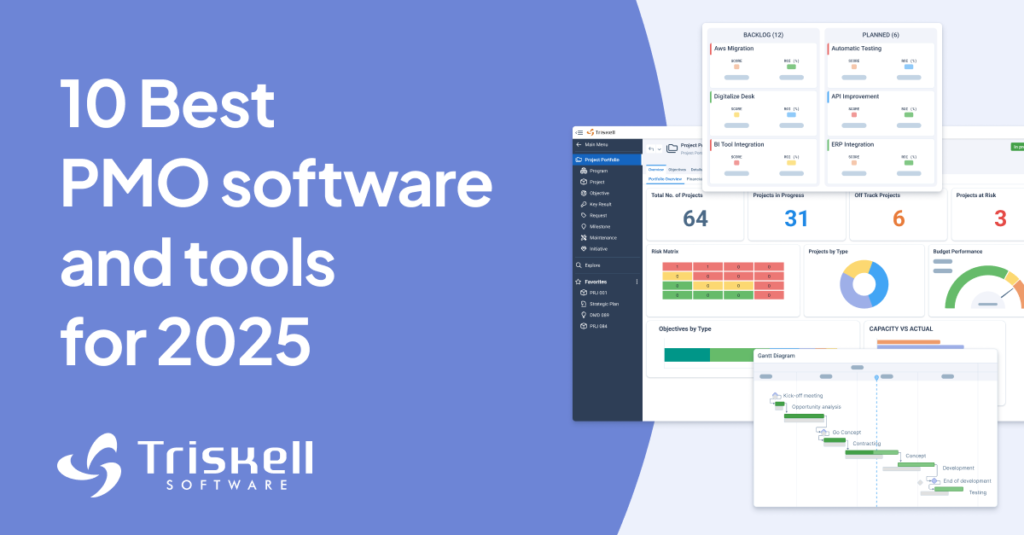
Best PMO software and tools for 2025: the ultimate guide
Explore and compare the best PMO software for project management, resource allocation, and strategic alignment, all in one guide.

Why SAFe needs true Portfolio Management
Uncover the game-changer for SAFe success! Revolutionize your strategy with True Portfolio Management. Boost efficiency, drive results.
